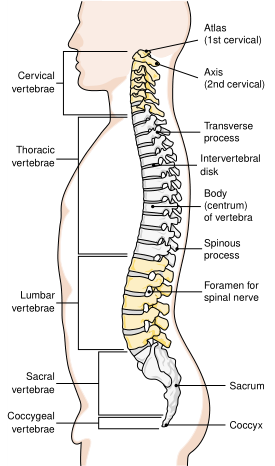- 签证留学 |
- 笔译 |
- 口译
- 求职 |
- 日/韩语 |
- 德语
The joints or articulations are classified according to the degree of movement they allow. A suture is an immovable joint held together by fibrous connective tissue, as is found between the bones of the skull. A symphysis is a slightly movable joint connected by fibrous cartilage. Examples are the joints between the bodies of the vertebrae (see Fig. 1) and the joint between the pubic bones. A freely movable joint is called a synovial joint or diarthrosis. Such joints allow for a wide range of movements. Tendons attach muscles to bones to produce movement at the joints.
Freely moveable joints are subject to wear and tear, and they therefore have some protective features. The cavity of a diarthrotic joint contains synovial fluid, which cushions and lubricates the joint. This fluid is produced by the synovial membrane that lines the joint cavity. The ends of the articulating bones are cushioned and protected by cartilage. Synovial joints are stabilized and strengthened by ligaments, which connect the articulating bones. A bursa is a small sac of synovial fluid that cushions the area around a joint. Bursae are found at stress points between tendons, ligaments, and bones.

FIGURE 1. Vertebral column from the side. (Reprinted with permission from Cohen BJ, Wood DL. Memmler's The Human Body in Health and Disease. 9th Ed. Philadelphia: Lippincott Williams & Wilkins, 2000.)
责任编辑:admin
